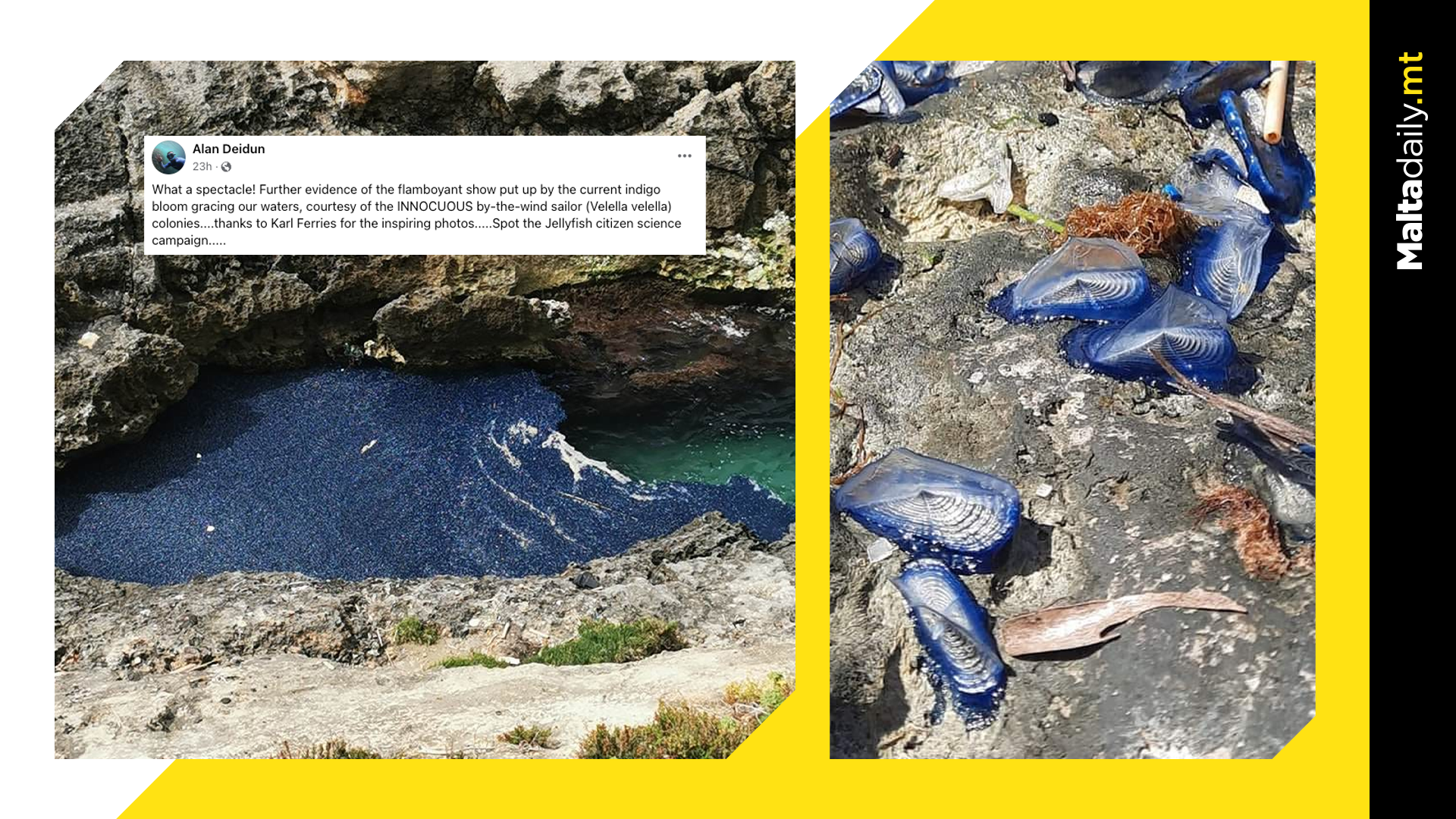
Marine biologist Alan Deidun took to social media to share more images of the Velella velella jellyfish, known in common parlance as ‘mini sailing boats’, which is currently taking over multiple beaches around Malta and Gozo.
The jellyfish, known as ‘qlugħ’ in Maltese for it’s sail-like top, can be seen in a massive ‘innocuous colony of polyps attached to the same raft.’
Deidun has previously shared images of the same species taking over the Gozitan Xatt l-Aħmar and the southern coast of Malta.
Information about this jellyfish can be found on the Spot the Jellyfish Campaign identification manual, which reveals that it has a low irritation sting.
‘It is frequently found in the Mediterranean, especially during spring. It can form dense aggregations extending for kilometres on the sea surface. Specialised floating sea slugs and sea snails find it to be a delicious snack!’
#MaltaDaily














